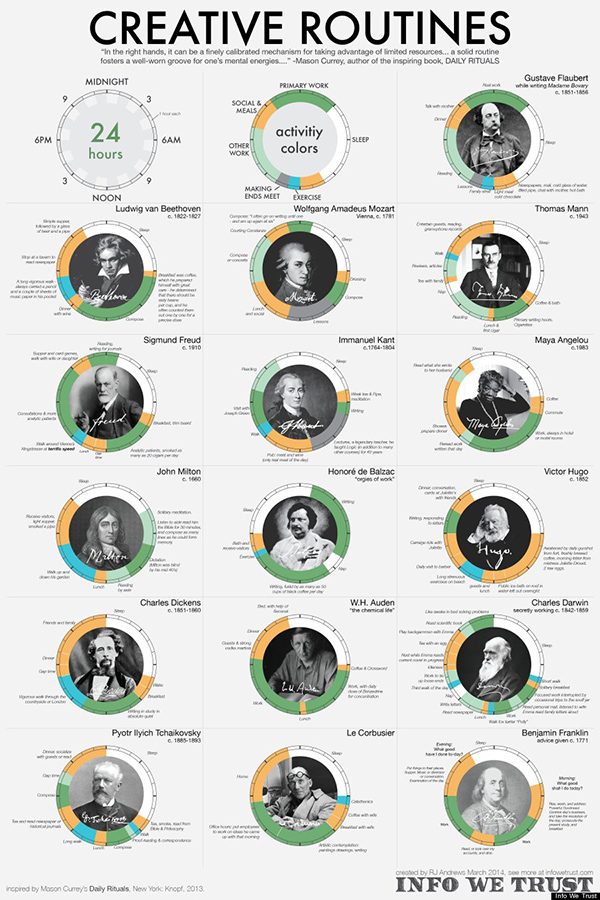Dude, Where’s My Margin?
Feeling the squeeze?
Ever get the impression that your affiliate campaigns are having to work twice as hard for half the profits?
If you work in any of the major verticals — dating, gaming, adult, apps, etc etc — on any of the major traffic sources — Google, Facebook, POF, BuzzCity, Decisive, Exoclick — you have surely seen the effects of an explosion in competition, and the rising costs that it entails.
There is a swelling crowd of hungry affiliate marketers, and most of them are armed with the same weapons:
- The same banners
- same landing pages
- same offers
- same payouts
- same budgets
- same bidding strategies
- same traffic sources
- and all of the same advice.
Is it any wonder that you can’t get profitable when your entire business can be reverse engineered and replicated in 20 minutes?
Because it can be replicated so easily, it is replicated.
Which leads us to a situation where most of the major traffic platforms are now battlegrounds in a race to the bottom.
Affiliates bid against each other, rapidly driving up click costs, until they can stomach the loss of margin no longer.
He who cries first is forced to take his ball and look for a new traffic source where the battle has yet to reach the savage dying stages.
So what can you do about it?
First, understand the insanity:
There are websites where the exact same banner is shown when you refresh the page. You’d think this is the same advertiser, but it isn’t.
Further investigation shows that the duplicate banners are linked to an identical landing page promoting the same offer. In some cases, the offer is provided by the same affiliate network.
The only way to distinguish between these two campaigns?
They have two unique domains — because they are run by two competing affiliates.
In an industry obsessed with healthy margins, we forget what damage this level playing field does to the cost of traffic.
It rises continually.
Cloning a business model isn’t necessarily a bad strategy, and neither is cloning a campaign. But most business models take months or years to replicate successfully.
An affiliate campaign takes 20 minutes.
Now imagine that you conjure some serious creative juices.
You produce the most stunning banner ever to leave Photoshop. It gets clicked harder and faster than any other creative in Digital History. Imagine you pair it to the freshest and bestselling landing page in your niche.
Now what?
You make money, we hope.
As you start to make money, you can afford to bid more than your competition.
Slowly your winning campaign rises to the top of the stack.
You’re scaling! The world is your oyster!
Until…
One sleep later: every other affiliate in your vertical has noticed that he’s getting less impressions than he received 24 hours ago. He goes to see who’s taking them. He sees your work.
“This looks effective.”
So he copies you, and an entire industry follows suit.
The greatest work of your career is rehashed, ripped, and reuploaded faster than you can say “Hands Off, Wank Biscuit”.
This is a big problem, particularly for those affiliates who misunderstand what constitutes a competitive advantage.
A banner is not an advantage. Banners are copied every minute.
Neither is a landing page.
A business built around the percentage points you are capable of extracting from Photoshop or JQuery is doomed to fail — because there are simply too many marketers ready and waiting to View Source on your innovation.
You can’t hide the creative element of a well scaled campaign.
We’ve got proxies in every corner of the world.
There are a number of spy tools that exist to ‘out’ your work before you’ve had time to celebrate it over breakfast.
Whatever you can get to work, somebody else can too.
(Arbitrage marketers are the most agile in the world.)
And therefore, if you want to regain your margins, the creative process is the wrong place to look.
The solution is to unlock an advantage that is difficult to replicate.
And here are the main areas you should choose to focus on:
1. Wholesale traffic
Imagine trying to run a grocery store if you had to buy your stock from Tesco at retail prices.
It sounds like an uphill struggle, but that is exactly what affiliates try to do.
We buy nicely geo-targeted traffic at the premium rate. We then rely on our creative approach to squeeze profit where a brand advertiser revels in waste.
(If he grew any smarter, we’d be doomed.)
The industry is dominated by self-serve platforms. These charge a premium for their convenience.
They are great if you get there first. But it’s amazing how quickly costs will rise on an auction platform if just a single competitor enters your market.
The good news?
It is possible to buy traffic in bulk.
You can cut out Tesco and go straight to the supplier.
When you find a campaign that is profitable on Placement X, you should be thinking about getting that placement all to yourself. The way to do this is by approaching the site owner and making an offer he can’t refuse.
You need to offer a better deal than he’ll get with a traditional network.
A useful carrot is to offer upfront payment for months in advance.
Better yet, target websites that fit your market perfectly whilst being monetized poorly.
Research which of the major ad networks are known to be stingy with their payments — and target their publisher-base relentlessly with better offers.
If you see Google AdSense on a target’s website, pounce accordingly.
No webmaster who relies on AdSense should be able to refuse the type of deal that a smart affiliate can offer.
2. Exclusive offers
AKA networking, schmoozing and getting a jump on the gravy train before it leaves the station.
The best time to promote an affiliate offer is when nobody else has access to it.
While it’s optimistic to expect a one-to-one relationship with the merchant (unless you’re packing some serious volume), it’s certainly possible to promote offers before they land on your favourite CPA networks.
Often this comes with sacrifice: slower payments, greater risk of getting burnt, the chore of dealing with a real-life, living, breathing, usually fucking sleeping accounting department.
By the time a CPA offer has risen to the top of your network’s ‘hottest offers’ chart, rest assured: some other affiliate has taken the pie.
You may still be able to feed off scraps if you run fast enough, but the train has left the station.
Make it your responsibility to stay connected in your niche. Attend the networking events, store the business cards if you truly absolutely have to.
Use LinkedIn to target companies that might not necessarily have an affiliate program but do have a product that you know how to sell well.
Your competition can’t promote an offer that they don’t have access to.
3. Investing in Technology and Infrastructure
If there’s one thing you shouldn’t skimp on, it’s technology.
Every day I see mobile marketers trying to make a living using double meta refreshes on servers that are barely wired to load a LiveJournal without creaking.
It’s like turning up at St Andrews with a bag full of hockey sticks.
By technology, I mean investments like:
- Servers
- Tracking solutions
- Spying tools
- Automation tools
- Redirect configurations
- Local Content Delivery Networks (CDNs)
- Productivity software (keep it simple, avoid productivity porn.)
- High quality scripts for geotargeting, countdowns, etc
- List building capabilities
- Your own choice of hardware
By infrastructure:
- Tax-efficient corporation setup (for the love of Satan’s Balls, stop running traffic under your personal name!)
- VAT registration (you think your rivals pay 20% on their traffic?)
- Access to high quality information
- Native translators
- Outsourcing teams
- Payment terms and credit
- Privacy settings to cover your trail
- A setup that lets you work on the move
Most affiliates skimp on both technology and infrastructure.
You shouldn’t if you care about your margins.
4. Attritional Bidding
There are several ways to win the war on self-serve traffic sources.
If you have money in the bank, you can grind out the smaller fish by accepting a skinnier margin. This advantage snowballs if you can drive enough volume to demand a higher payout.
Some of the biggest businesses in the world operate on wafer thin margins (1-10%), but they make up for it in volume. They leverage economies of scale against the competition to literally choke them out of the market.
Similarly, you can focus on high quality traffic at the expense of short term profits.
If you deliver good leads, you can outmanoeuvre the competition through pay bumps and familiarity with the vertical’s underlying economy.
Knowledge of what ultimately sells is priceless in a way that knowledge of how to turn a quick 200% ROI usually isn’t.
The third option is to be more efficient.
Affiliates waste ad dollars every day by failing to set rules and redirects for their campaigns.
Just because you’re bidding on prime American traffic doesn’t mean that you’ll actually get it.
Analyse where your traffic is coming from.
Use a filter to deal with mobile traffic, and another to redirect traffic from outside your geo.
You can choose to monetise it with an alternate campaign, or simply sell the impressions back to an ad exchange.
5. Unfashionable Traffic
When a newbie logs in to TrafficJunky and buys a 300×250 banner for the whole of America, I can tell him with sad-eye certainty that he will not be making money in my lifetime.
Because his campaign is simply too fashionable.
It’s too fucking obvious.
You do not get profitable trying to conquer rush hour traffic with a bicycle and a $20 budget.
What is unfashionable traffic?
It’s traffic that you don’t hear publicised on blogs, forums or in network roundup emails. You’ll never hear me talking about it, or anybody who actually relies on it.
It’s traffic that still has healthy margins because the competition either doesn’t know how to monetise it, doesn’t know where to find it, or doesn’t have the technology to deal with it.
All of these burdens create a wall that protects the traffic from inflated costs.
Facebook is a good example of unfashionable traffic.
Yep, Facebook. Unfashionable.
There is still huge money to be made on Facebook, but in order to do so you need advanced technology to cloak your creatives, and you need a healthy bank balance to spend thousands on accounts that might disappear overnight.
To the newbie gazing in from the cold, that’s unfashionable traffic.
It comes with strings attached, headaches to nurse, problems to solve.
The newbie would rather move along to the next platform where the barrier to entry is less severe. The only problem is that he’s not alone.
The platforms with less friction are invariably meeting grounds for an industry full of disillusioned souls all trying to find their margins without having to put in the groundwork.
But shouldn’t that excite you?
You don’t have to follow them.
The upside to monetizing unfashionable traffic is that it gives you a massive advantage in times of industry crippling saturation.
If you run the hottest campaigns on the biggest self-serve platforms with the same creatives as the next guy, you can’t possibly expect to be making money forever.
You’d do well to make money, period.
Newbie affiliates, I’ll be honest with you:
You will not survive unless you build some walls around your business.
Building those walls means embracing the challenges that fill lazy marketers with dread.
It means pushing out of your comfort zone; creating a structural edge in your business that allows you to outbid the competition regardless of whether they copy your banners and landing pages.
That’s not to say that affiliate marketing is dead.
Only that arbitrage for fools might as well be.







Hey finch what do you mean by it's about to pivot en refocus energies? That is not profitable anymore?